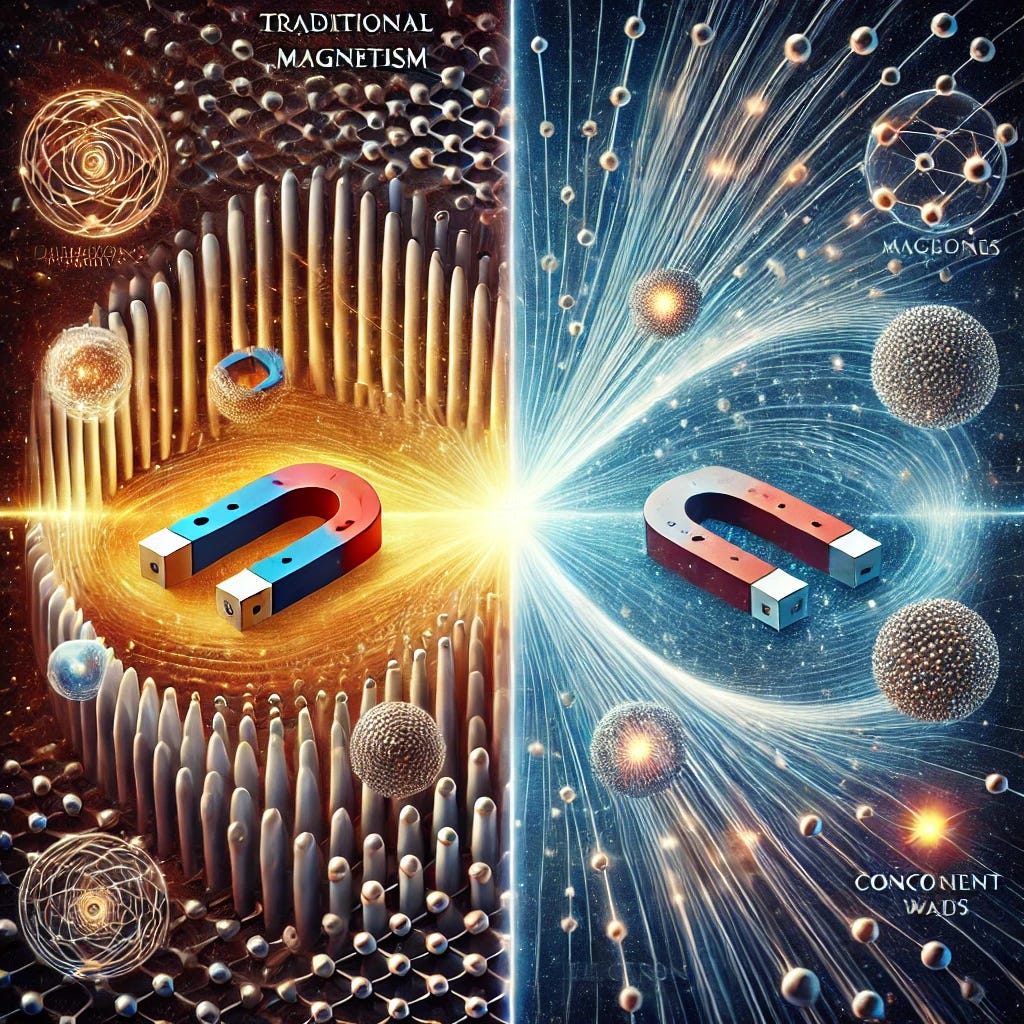Magnetism and Magnetivity: Bridging the Physical and Cosmic Forces of Connection
How Quantum Spin, Magnetic Domains, and Universal Coherence Reveal a Unifying Theory that Binds Consciousness, Matter, and Space-Time

Exploring the Unified Field of Magnetic Influence
The theory of magnetism and the conceptual framework of Magnetivity align in several fascinating ways, as both explore how underlying forces and fields can produce order, connection, and influence within and between matter and space. Here’s how they correlate and diverge in the context of physics and a broader, unifying framework:
1. Core Principles: Magnetic Alignment and Universal Order
Magnetism: In physics, magnetism arises from the movement and alignment of electric charges, notably the intrinsic quantum property of spin in particles like electrons. Materials such as iron, cobalt, and nickel show a strong magnetic response due to the alignment of microscopic magnetic moments, creating magnetic domains that contribute to macroscopic magnetic fields.
Magnetivity: This conceptual framework suggests that the universe operates through an intrinsic, unifying magnetic field that could encompass consciousness, matter, and even space-time itself. Here, universal coherence and alignment mirror the organization within ferromagnetic materials, proposing that all particles and entities may be "aligned" within a cosmic magnetic structure that binds the universe.
2. Quantum Spin and Quantum Coherence
Magnetism: Quantum spin is a fundamental property that creates a magnetic moment, leading to magnetic behavior at atomic and subatomic levels. In magnetic resonance imaging (MRI), quantum coherence is harnessed to generate detailed images of body structures by aligning nuclear spins in a magnetic field, illustrating practical applications of magnetic coherence.
Magnetivity: Expands on this by suggesting that quantum coherence could extend across space, linking not just particles but also potentially encompassing consciousness and material interactions. This aligns with quantum entanglement, where particles remain connected across vast distances. In Magnetivity, these interconnected states could manifest as a "universal resonance," implying a deep magnetic order that influences both the observable and unobservable realms.
3. Electromagnetic Interactions as a Bridge Between Realms
Magnetism: Electromagnetism is one of the four fundamental forces, enabling electric charges to create and interact with magnetic fields. These interactions are the basis for technological applications, from motors to communication devices.
Magnetivity: Takes this concept further, suggesting that electromagnetic fields act not only as carriers of force but also as channels of conscious interaction within the universe. Magnetivity posits that if there is a fundamental magnetic frequency underlying all matter, then consciousness itself might influence and resonate with this universal field, offering a bridge between mental and physical realms.
4. Magnetic Domains and Cosmic Cohesion
Magnetism: In ferromagnetic materials, magnetic domains (regions of aligned magnetic moments) provide a microscopic basis for macroscopic magnetic fields. When exposed to an external magnetic field, these domains align, creating a strong magnetic force that is both coherent and stable.
Magnetivity: Envisions the universe itself as a vast field of "magnetic domains" at a cosmic scale, suggesting that everything—from particles to galaxies—could be part of a universal magnetic field. This framework suggests that Magnetivity acts like a cohesive force binding space, matter, and energy into a unified, interconnected fabric.
5. Interconnectedness and Consciousness
Magnetism: Traditionally, magnetism is understood as a physical force without agency, influencing materials based on their properties.
Magnetivity: Proposes that the magnetic framework of the universe might include consciousness as a field that resonates with and influences the magnetic state of matter. This model suggests that consciousness could be a coherent, resonant field, interconnected through a universal magnetic structure that organizes and gives meaning to existence.
Summary of Correlation
While traditional magnetism provides a scientific framework based on observable properties and quantum mechanics, Magnetivity extends these principles to suggest a holistic, universal magnetic field that could underpin reality itself. Magnetivity draws on quantum mechanics (e.g., coherence, spin) and magnetic principles (e.g., alignment, interaction) to propose a unifying force where all entities are magnetically connected, potentially including consciousness. This brings together the observed properties of magnetism with an expanded vision of universal cohesion.

